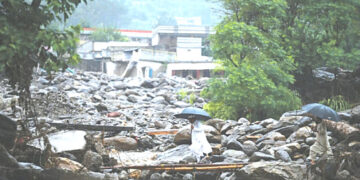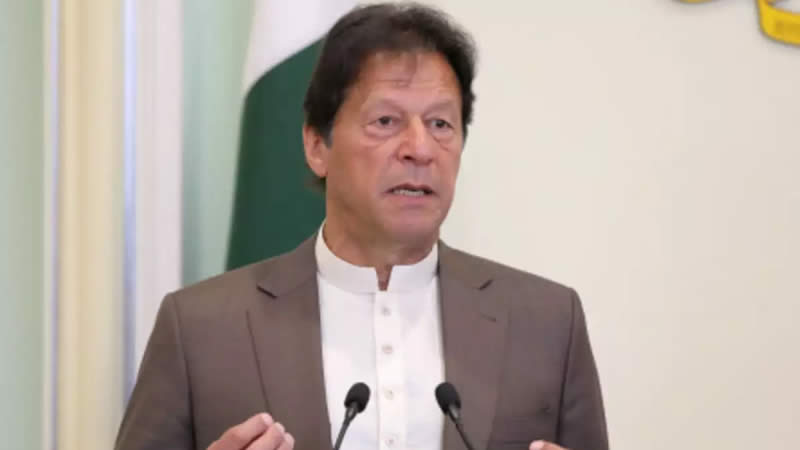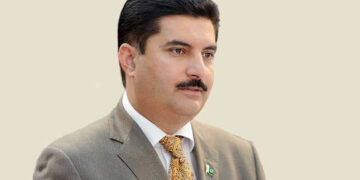 (Reuters) – Pakistan ordered fresh evacuations from Sindh province on Thursday as the country struggled to bring relief to millions displaced by flooding and sought international help to rescue its economy.
(Reuters) – Pakistan ordered fresh evacuations from Sindh province on Thursday as the country struggled to bring relief to millions displaced by flooding and sought international help to rescue its economy.
Pakistan’s finance minister and central bank governor joined International Monetary Fund talks in Washington that are focused on salvaging the economy.
Finance Minister Abdul Hafeez Shaikh said his country wants to keep pursuing an $11 billion IMF loan program and demonstrate its resolve to make tough economic decisions, dismissing reports that Pakistan might abandon the program.
“We want to remain on track with the IMF program because that is a reform program that we are ourselves undertaking,” he told reporters outside the IMF headquarters.
Separately, the U.S. State Department said it had “threat information” that foreign aid workers and Pakistani ministries responding to the natural disaster may be targeted by militants.
In northern Sindh, local authorities issued a new evacuation order for Shahdadkot, a town of about 300,000, for the remaining few tens of thousands of people to leave as floodwaters approached the town.
“Shahdadkot is certainly in danger,” said relief commissioner for Sindh Riaz Ahmed Soomro. “People have been asked to evacuate, but it’s a very big town. People had built an artificial embankment but the pressure is increasing.”
Downstream in Thatta, the towns of Sujawal, Daro and Mirpur Batoro, with a combined population of 400,000, were ordered evacuated after the swollen Indus river broke through an embankment early Thursday morning.
Many residents of the Indus delta area, about 100 km (62 miles) east of Karachi, had already left, but “thousands” remained, said Saleh Farooqi, director general of the National Disaster Management Agency’s Sindh office. “If a second levee breaks, more towns could be inundated.”
Floodwaters are beginning to recede across the country, but because of high tides in the Arabian Sea and the possibility of more rain, the risk of flooding remains in Sindh.
The spokesman for the powerful Pakistani Army said difficulty in reaching certain areas, where 800,000 people are accessible only by air, could fuel social unrest.
“If the aid doesn’t reach certain areas, then yes, the people will become restive,” said Major General Athar Abbas.
The worst floods in decades have made the government more unpopular, heightening concerns about a nation that is already battling Islamist militants.
In Sukkur, to the north, flood victims crowded relief camps and said incidents of disease were increasing.
“The children are getting sick,” a man who called himself Bangul told Reuters. “I myself am not feeling well.”
He said some people had started returning to their villages, even though many were still flooded. “We can only see the roof and minaret of the mosque,” he said. “We think maybe it will take six months to dry up and then we can go back.”
POSSIBLE TALIBAN THREAT
Pakistan’s government, and its ally the United States, have warned that the Islamist militants the military is battling may try and exploit the chaos. Washington sees Pakistan as a frontline state in its war against the Taliban and al Qaeda.
“We have information of … potential targeting of foreign relief workers in Pakistan as well as government ministries,” U.S. State Department spokesman P.J. Crowley told reporters in Washington, saying both countries were doing their utmost to protect aid workers and to ensure relief operations continue.
While aid groups in Pakistan brushed off the reported threats, the outgoing U.N. humanitarian chief, John Holmes, told reporters at the United Nations he took them seriously but added: “we will not be deterred.”
One Pakistani government official said he did not think the Taliban would attack as this would trigger a public backlash, while army spokesman Abbas said he had not received reports of any threat to aid workers.
Azam Tariq, a spokesman for the Tehrik-e-Taliban Pakistan (Taliban Movement of Pakistan), told Reuters: “We will not tolerate American aid. They want to use it for their own interest and don’t want to help the people of Pakistan. They have their own nefarious designs.”
In Washington, Finance Minister Shaikh appealed for understanding from the international community as he joined the IMF talks, which began on Monday.
The delegation is expected to seek easier terms under the IMF program agreed in 2008 to ensure the country can meet fiscal and monetary targets and keep qualifying for IMF funds.
Pakistan aimed to ensure fiscal austerity, stay within fiscal targets and reform public sector corporations to set the stage for economic growth, he said.
IMF spokesman Gerry Rice said the talks were currently focused on “getting a better sense of the impact of the floods on the economy.” He urged donors to give grants, not loans, for rebuilding projects to avoid adding to Pakistan’s debt burden.
The talks are likely to last until late next week. The delegation is scheduled to meet World Bank President Robert Zoellick on September 1.
The floods have damaged at least 3.2 million hectares (7.9 million acres) — about 14 percent of Pakistan’s entire cultivated land — according to the United Nation’s food agency. The total cost so far in crop damages is about 245 billion rupees ($2.86 billion).
According to the United Nation’s Office for the Coordination of Humanitarian Affairs, 60 percent, or $274.7 million out of $459.7 million, of funding for emergency response has been met – Reuters










